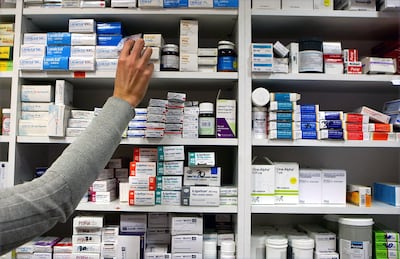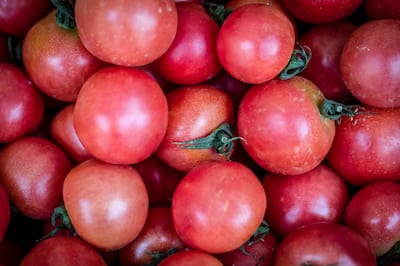Iron is an essential nutrient for many things our bodies do every day, and yet many adult women of reproductive age are deficient.
Menstrual bleeding and pregnancy are the main drivers of the deficiency. Symptoms are often non-specific and vague, such as fatigue, brain fog, lightheadedness, sleep disturbances and a reduced ability to exercise. If left untreated in the long term, iron deficiency can deplete healthy red blood cells in the body, causing anaemia. During pregnancy, iron deficiency and anaemia can have an adverse effect on the mother and the foetus.
If you have heavy periods, eat a vegetarian diet or are planning to get pregnant, consider asking your doctor to test your ferritin levels, which measures how much iron is stored in your body, says Dr Malcolm Munro, professor of obstetrics and gynaecology at the David Geffen School of Medicine at the University of California, Los Angeles.
For women who are not pregnant, ferritin levels should be at least 15 micrograms per litre, and haemoglobin levels at least 12 grammes per decilitre, according to the World Health Organisation. But increasingly, researchers suggest that the cut-offs should be higher – for ferritin, 30-50 micrograms per litre; and for haemoglobin, 13 grammes per decilitre.
READ MORE
If you’ve determined that your iron levels are low, “we have this approach – we say we have to ‘stop the leak and fill up the tank’,” says Dr Munro.
Here’s what that might look like.
Keep menstrual bleeding in check

Many women don’t know whether their menstrual bleeding might be considered heavy, says Dr Angela Weyand, a paediatric hematologist. “I see a lot of adolescents who have very heavy menstrual bleeding and end up having severe anaemia where they have to be admitted to the hospital. Oftentimes, these patients hadn’t even recognised that their bleeding was abnormal.”
Soaking through a pad or tampon every two hours, bleeding for more than seven days or needing double coverage (such as a tampon and a pad) are all signs that your period is too heavy.
If you have heavy bleeding and are iron-deficient, talk to your gynaecologist to first rule out factors that might be causing the excess bleeding, such as endometriosis or fibroids, suggests Dr Munro. From there you might consider approaches to reduce how much you bleed, such as birth control pills or the hormonal intrauterine device.
Taking naproxen or ibuprofen can also help reduce blood loss if taken two days before your period starts and throughout it.
[ Haemochromatosis: it’s known as the ‘Celtic gene’ for good reasonOpens in new window ]
Supplement every two days
There are many types of supplements, providing different amounts of iron, but a higher dose is not necessarily better; it’s best to take no more than 100 milligrams per day, says Dr Munro. Exceeding that amount can worsen side-effects, such as constipation or nausea, and the iron won’t be well absorbed. For example, the most common iron tablets contain 325mg of ferrous sulphate, which provide 65mg of iron, and one of those would be sufficient.
Studies suggest that taking your iron supplement every other day is just as effective as dosing more frequently and has fewer side effects.
Avoid having calcium supplements, milk, coffee, tea or high-fibre foods at the same time as your iron supplement, since these may interfere with your body’s ability to absorb iron.
Consistent supplementation should improve ferritin numbers in about three months, says Dr Munro. Once your ferritin numbers are up and you are not losing as much blood during menstruation, you might be fine relying just on your diet for iron, he added.
Make smart nutritional choices
According to HSE recommendations, men over 18 and women over 50 should consume at least 8.7mg of iron each day. Women aged 19-50 should aim for 14.8mg a day.
There are two types of iron found in foods – haem and non-haem. Haem iron is found in any animal-derived source, including meat, poultry and fish; non-haem iron is found in plant-based foods such as lentils and beans, some vegetables, grains and nuts, says Elaine McCarthy, a nutrition researcher at the University College Cork.
Both types of iron can be valuable sources, but your body absorbs haem iron more efficiently, says McCarthy.
That said, plant-based foods can still be great sources of iron. A cup of cooked lentils, for example, contains 6.6mg of iron – more than is found in a serving of beef – but you’ll want to use a few tricks to help your body absorb it, says Diane DellaValle, an associate professor of nutrition science at King’s College in Wilkes-Barre, Pennsylvania.
Drawing up a personalised plan with a registered dietitian is worthwhile, but here are a few of her tips on getting more iron:
Pair plant-based iron with absorption enhancers

Including a bit of meat or a good source of vitamin C in the same meal will improve your absorption of non-haem iron, says Dr DellaValle. You can add tomato or bell pepper to your lentils, for example, or have strawberries or an orange on the side.
Avoid absorption blockers
Certain compounds found in tea and coffee can interfere with the absorption of non-haem iron from food and supplements, so avoid having those beverages at the same time as plant-based iron sources, says Dr DellaValle.
Look for enriched foods
Other good sources of iron include certain fortified foods, like breads and pastas that contain enriched wheat flour, says Dr DellaValle. Enriched rice also contains extra iron, though you’ll lose some of it if you rinse the rice before cooking. And many breakfast cereals are fortified with iron; just be aware that the iron will soak into the milk in your cereal bowl, so you’ll need to drink the milk to get the full dose.
Cook with special tools
One of Dr DellaValle’s favourite tips is to cook with a Lucky Iron Fish. Place it in your cooking pot along with a couple drops of lemon juice or vinegar, and the product releases 6 to 8 milligrams of iron into whatever you’re preparing, whether it’s rice, oatmeal or soup. Cooking in a cast iron pan can also add iron to your meal. – This article originally appeared in the New York Times















